 |
 |
 |
| |
The incidence of serious non-AIDS bacterial infections in the EuroSIDA cohort
|
| |
| |
Reported by Jules Levin EACS Oct 12-15 2011 Belgrade Serbia
O Søgaard, J Reekie, M Ristola, D Jevtovic, I Karpov, M Beniowski, S Servitskiy, P Domingo, P Reiss, A Mocroft, O Kirk for EuroSIDA in EuroCoord
ABSTRACT
Objectives: In the era of combined antiretroviral therapy (cART), typical AIDS-defining illnesses have been substituted by other comorbid conditions often referred to as non-AIDS defining conditions. This study aimed to determine incidence rates (IRs) and identify risk factors for serious non-AIDS defining infections.
Methods: Data from the prospective, multinational EuroSIDA cohort were utilized to determine IRs of first diagnosis of the following non-AIDS defining infections: Bacteraemia, endocarditis, meningitis, peritonitis, pneumonia, osteitis, and pyelonephritis.
Only serious infections requiring hospitalization were considered. Incidence rate-ratios (IRRs) and risk factors were assessed by Poisson regression.
We estimated crude and adjusted IRRs according to cART use and current CD4+ count (< 350, 350-500, >500 cells/μL).
Results: During 31,877 person-years of follow-up (PYFU), 258 patients were diagnosed with a non-AIDS infection (IR=8.3 per 1000 PYFU, 95% confidence interval [CI]: 7.3-9.3).
The most frequent infections were pneumonia (IR=5.9, 95% CI: 5.1-6.8), bacteraemia (IR=1.3, 95% CI: 0.9-1.6), and pyelonephritis (IR=0.6, 95% CI: 0.4-1.0).
Use of cART compared with no current cART was associated with a 60% lower risk of non-AIDS defining infection (adjusted IRR=0.4, 95% CI: 0.3-0.5, p< .0001).
Current CD4+ count above 500 cells/μL was associated with reduced risk of infection compared with lower CD+ counts of < 350 cells/μL (adjusted IRR=3.1, 95% CI: 2.3-4.2, p< .0001) and 350-500 cells/μL (adjusted IRR=1.3, 95% CI: 0.9-1.9, p=0.17).
Other independent risk factors for non-AIDS defining infections included: prior AIDS diagnosis, female gender, age, IDU, region of Europe, and diabetes.
Conclusions: Serious non-AIDS defining infections that require hospitalization remain a common cause of morbidity among people with HIV. Identification of risk factors including HIV-specific factors such as absence of cART and low CD4+ cell counts, as well as non-HIV-related factors such as gender, age, diabetes, is an important step to reduce the risk of these infections.
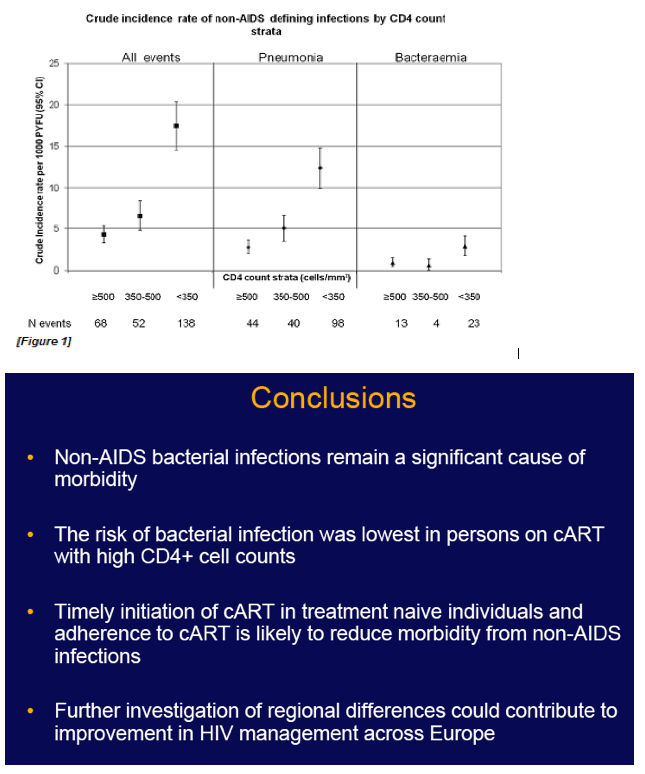
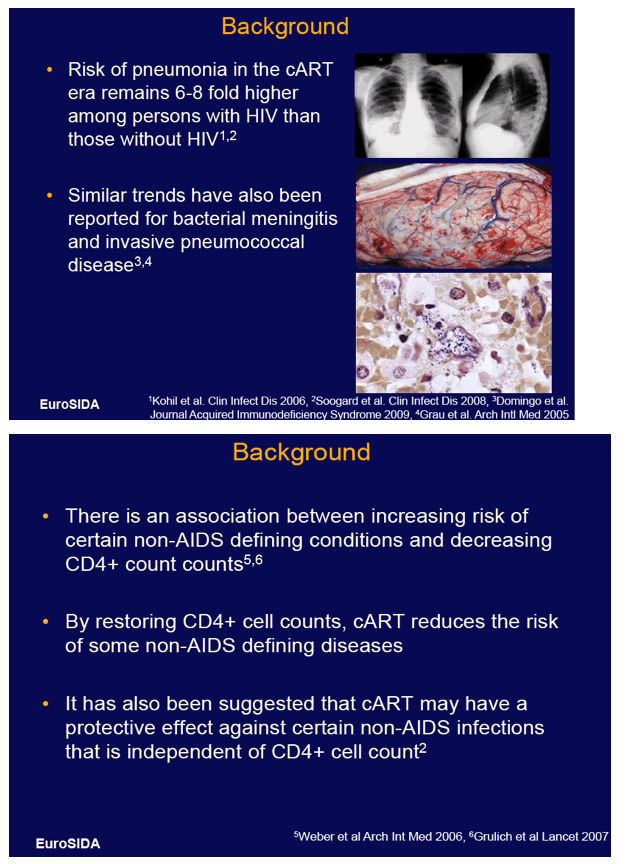
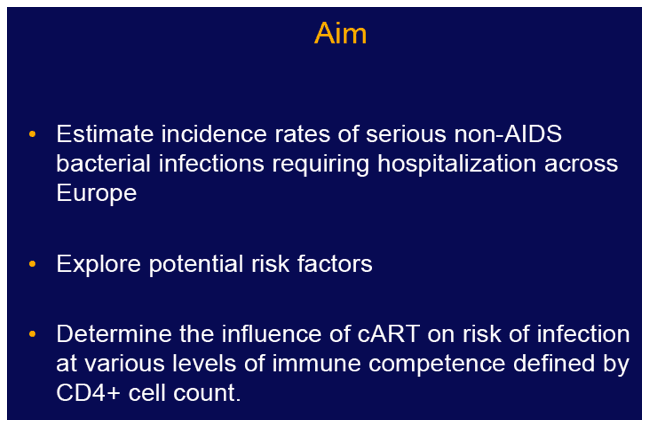

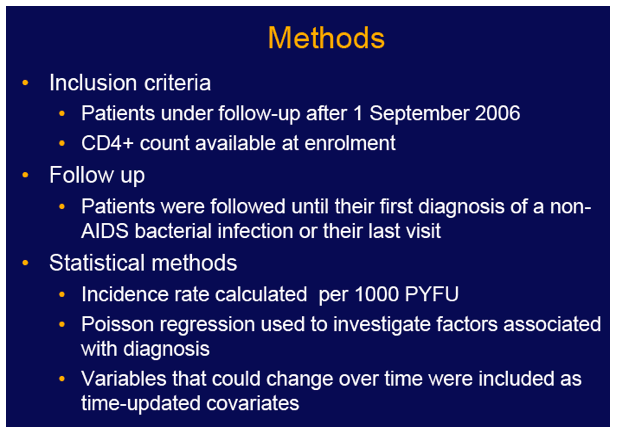
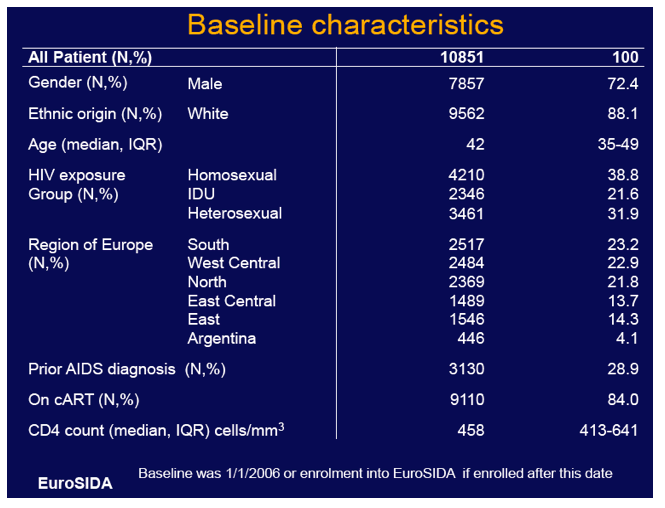
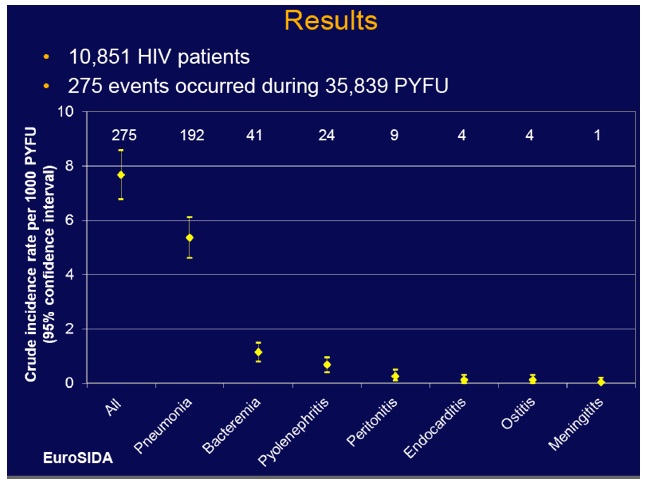
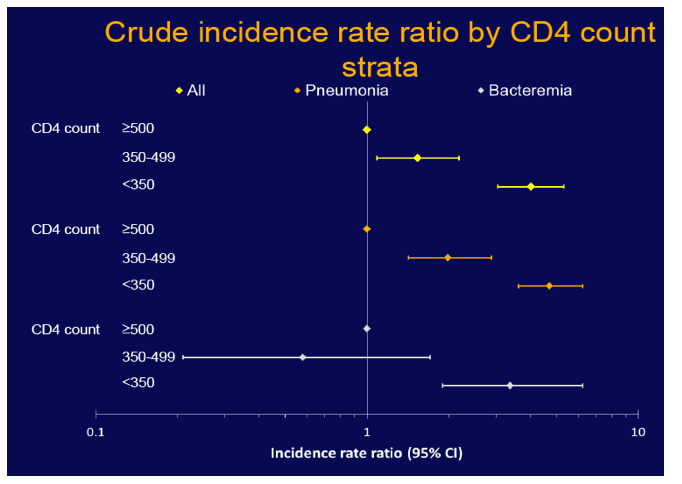
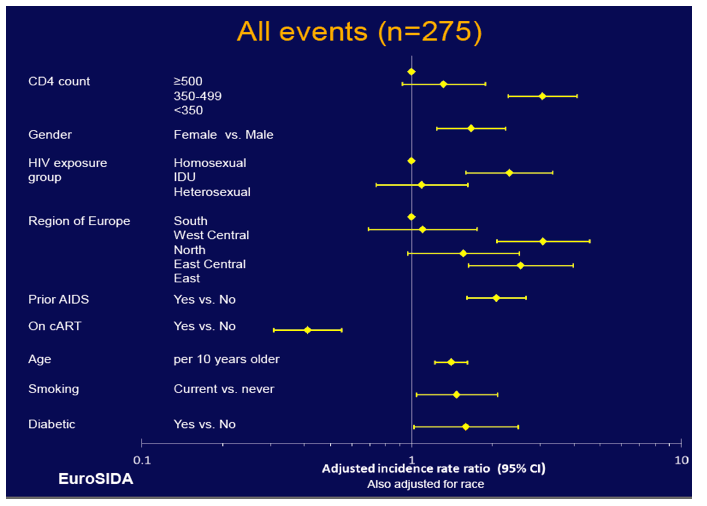
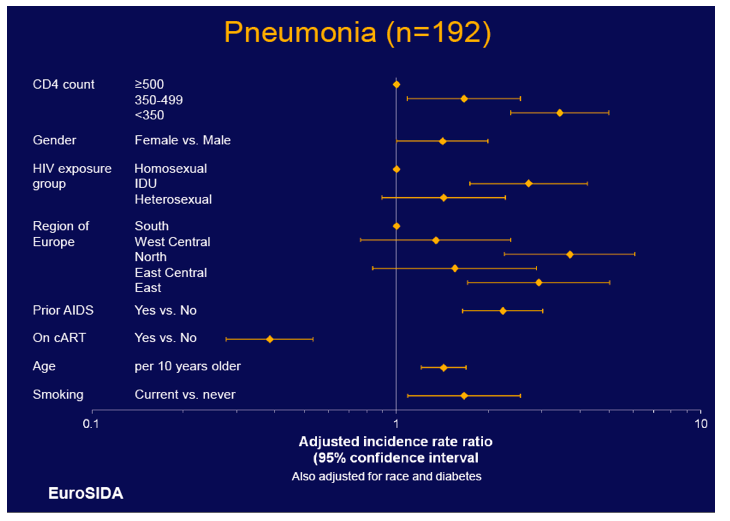
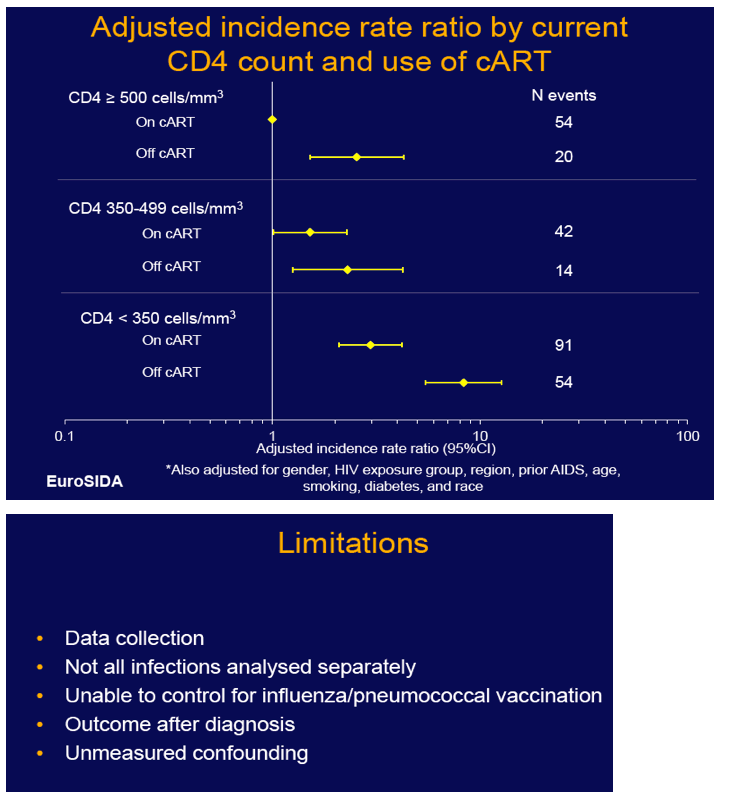
|
| |
|
 |
 |
|
|